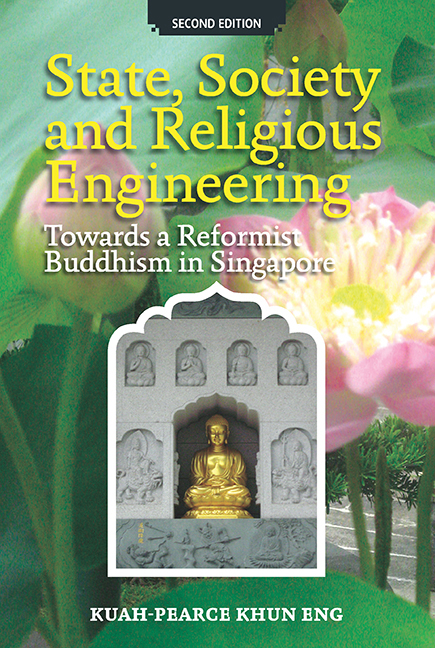Book contents
- Frontmatter
- Contents
- List of Diagrams
- Note on Romanisation
- Preface to the Second Edition
- Acknowledgements to the Second Edition
- Introduction
- PART 1 INVENTING A RELIGIOUS TRADITION
- PART 2 STATE, SOCIETY AND RELIGIOUS ENGINEERING
- PART 3 TOWARDS A REFORMIST BUDDHISM
- 7 Towards a Reformist Buddhism
- 8 Members and Their Religiosity
- 9 Competing Claims of Modernity and Class Identity: Christianity versus Reformist Buddhism
- Conclusion
- Postscript to the Second Edition: Towards a Humanist and Socially-engaged Buddhism
- Glossary
- Bibliography
- Index
8 - Members and Their Religiosity
from PART 3 - TOWARDS A REFORMIST BUDDHISM
Published online by Cambridge University Press: 21 October 2015
- Frontmatter
- Contents
- List of Diagrams
- Note on Romanisation
- Preface to the Second Edition
- Acknowledgements to the Second Edition
- Introduction
- PART 1 INVENTING A RELIGIOUS TRADITION
- PART 2 STATE, SOCIETY AND RELIGIOUS ENGINEERING
- PART 3 TOWARDS A REFORMIST BUDDHISM
- 7 Towards a Reformist Buddhism
- 8 Members and Their Religiosity
- 9 Competing Claims of Modernity and Class Identity: Christianity versus Reformist Buddhism
- Conclusion
- Postscript to the Second Edition: Towards a Humanist and Socially-engaged Buddhism
- Glossary
- Bibliography
- Index
Summary
INTRODUCTION
Today, the changing profile of the Singapore Chinese population with its local-born, second and subsequent generations have found much of the Chinese syncretic religious practices less meaningful to their religious needs. While recognising the functional aspects of Shenism, they found it irrelevant to their quest for individual spiritualism and salvation. These younger Chinese are searching for a religion that will fulfil their spiritual needs. They seek a canon of religious teachings that encompasses a set of moral-ethical values and a spiritual excursion into the world of theodicy, eschatology and soteriology. They thus look to other religious organisations that will provide them answers to their quest for spiritualism. At the same time, they also look towards a priesthood (in our case, the Sangha) that is well-versed with the scriptures, erudite in their doctrinal exposition and charismatic in their public communication. Apart from fulfilling their spiritualism, these younger Chinese also expect the religion to take on relevant social roles. It is expected to be sympathetic and charitable to the under-privileged and marginalised groups of people including the aged and people who have been abandoned by society at large. These young Chinese found their quest of spiritualism in Reformist Buddhism.
This chapter will profile Buddhist membership found in Singapore and the changing religious needs of a younger Singapore Chinese population. It will also explore their position and influence within the Chinese religious community.
MEMBERSHIP PROFILING
The 1990 Census survey found that 31.8% of household heads surveyed are Buddhists and 23.8% are Shenists (Chinese traditional beliefs)/Daoists (Department of Statistics, 1994: (6):63). However, the 2000 Census survey groups religion according to resident population, reflecting the trend towards an individual-based belief instead of a household-based belief system. This reflects a growing trend towards regarding religion as a personal and private affair where individuals are free to choose their own religion. The 2000 Census shows that there has been a rapid increase of Buddhists in Singapore and a rapid decline in Daoism/Chinese traditional beliefs. Within the Chinese community, 54% of the Chinese are Buddhists while only 11% are practitioners of Daoism and Chinese traditional beliefs (Department of Statistics, 2001 (2): 112).
- Type
- Chapter
- Information
- State, Society and Religious EngineeringTowards a Reformist Buddhism in Singapore (Second Edition), pp. 251 - 270Publisher: ISEAS–Yusof Ishak InstitutePrint publication year: 2009



